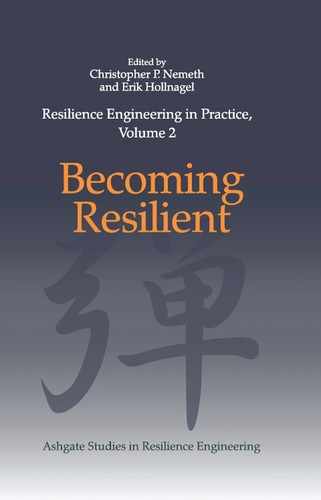Book Description
This is the fifth book published within the Ashgate Studies in Resilience Engineering series. The first volume introduced resilience engineering broadly. The second and third volumes established the research foundation for the real-world applications that then were described in the fourth volume: Resilience Engineering in Practice. The current volume continues this development by focusing on the role of resilience in the development of solutions. Since its inception, the development of resilience engineering as a concept and a field of practice has insisted on expanding the scope from a preoccupation with failure to include also the acceptable everyday functioning of a system or an organisation. The preoccupation with failures and adverse outcomes focuses on situations where something goes wrong and the tries to keep the number of such events and their (adverse) outcomes as low as possible. The aim of resilience engineering and of this volume is to describe how safety can change from being protective to become productive and increase the number of things that go right by improving the resilience of the system.
Table of Contents
- Cover
- Half Title
- Title Page
- Copyright Page
- Table of Contents
- List of Figures
- List of Tables
- Preface: Seeking Resilience
- Notes on Contributors
- Chapter 1 An Emergent Means to Assurgent Ends: Societal Resilience for Safety and Sustainability
- Chapter 2 Describing and Prescribing for Safe Operations within a Large Technical System (LTS): First Reflections
- Chapter 3 Fundamental on Situational Surprise: a Case Study with Implications for Resilience
- Chapter 4 Resilience Engineering for Safety of Nuclear Power Plant with Accountability
- Chapter 5 Criteria for Assessing Safety Performance Measurement Systems: Insights from Resilience Engineering
- Chapter 6 A Framework for Learning from Adaptive Performance
- Chapter 7 Resilience Must Be Managed: a Proposal for a Safety Management Process that Includes a Resilience Approach
- Chapter 8 A Case Study of Challenges Facing the Design of Resilient Socio-technical Systems
- Chapter 9 Some Thoughts on How to Align the Theoretical Understanding of Team Performance with Resilience Engineering Theory
- Chapter 10 Noticing Brittleness, Designing for Resilience
- Chapter 11 Sensor-driven Discovery of Resilient Performance: The Case of Debris Removal at Ground Zero, NYC, 2001
- Chapter 12 Becoming Resilient
- Bibliography
- Author Index
- Subject Index
